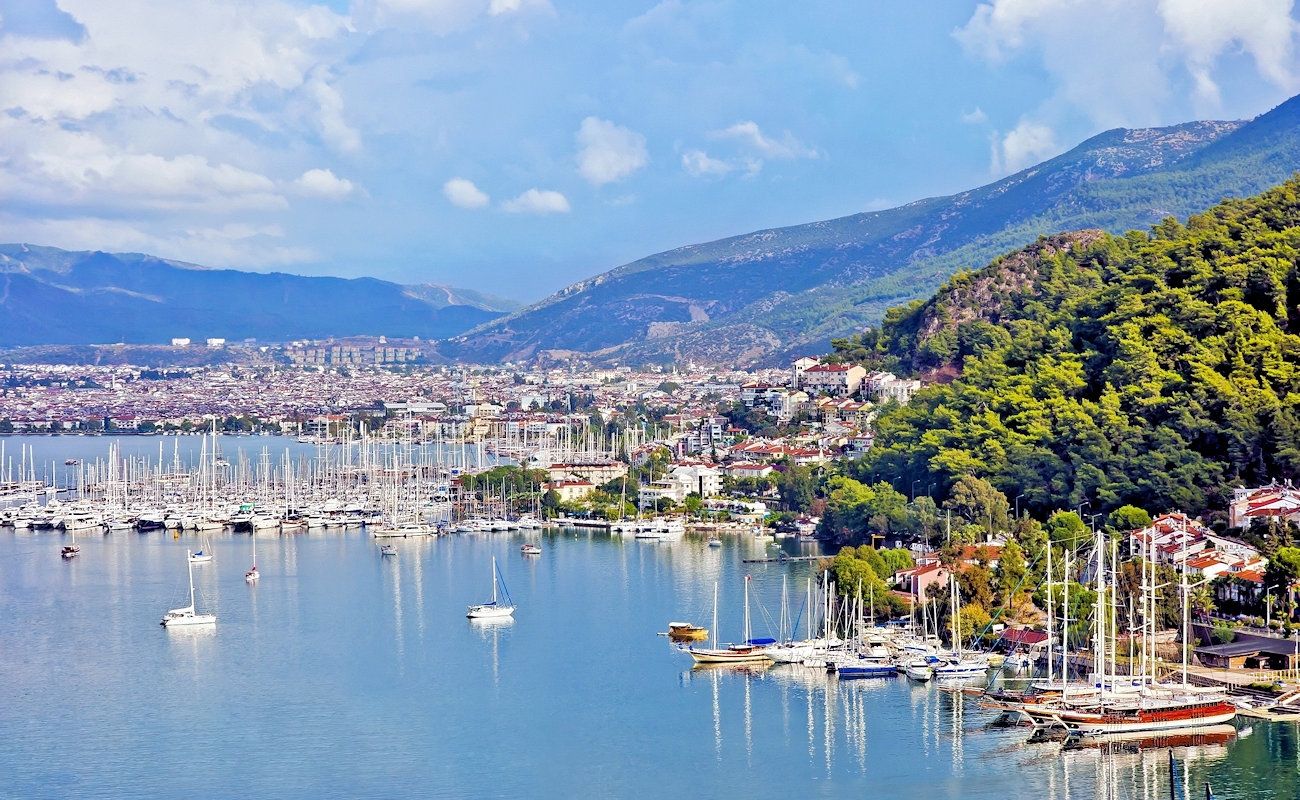
Fethiye The Best About Ancient And Ultimate Cruise Port
Fethiye is beautiful town has a rich history dating back to the Lycian period, when it was known as Telmessos, or ‘land of lights’. Today, Fethiye is a stunning blend of ancient and modern, where the majestic Taurus Mountains meet the crystal-clear waters of the Mediterranean. Whether you’re looking to explore the town’s fascinating past or simply relax on one of its many beaches, Fethiye has something for everyone. Don’t miss the chance to visit the twelve islands that surround the town’s semicircular bay. Come and experience the magic of Fethiye for yourself!
Wow, you’re going to love it here! The resort has maintained its Turkish character with numerous bazaars, shops, and restaurants. The red-tiled roofs in the picturesque, cobbled backstreets add to the charm. You’ll find friendly locals playing backgammon in the shade or offering you a cup of refreshing apple tea while explaining the history of the famous Turkish carpets. You’re in good hands!
And don’t worry about anything, the resort offers plenty of restaurants, bars, cafes, and nightclubs, as well as markets, banks, cash points, chemists, and doctors.
Fethiye is an absolutely amazing town with majestic mountain scenery and a superb, island-strewn bay! The town is thriving on a growing tourist industry, which is no surprise given how wonderful it is. The old quarter is picturesque and surprisingly laid back, reminiscent of a traditional fishing village. You’ll love it here! Oludeniz, Turkey’s most famous beach, is just a stone’s throw away! And if you’re looking for something truly unique, you have to check out Cold and Hot Bay. The water may be cool on the surface, but just half a metre down, you can soak in the most luxurious hot spring water that’s said to work wonders for rheumatism and arthritis.
Ancient city of Telmessos
The Best About Ancient Telmessos had an importance in antiquity which is belied both by its extant remains and by its modern successor, Fethiye, a small town whose chief export is chrome from local mines.
This importance was guaranteed by two geographical factors: the site commands the only overland route into western Lycia, and on a notoriously difficult coast it possesses one of the best natural harbours in Asia Minor.
Although politically Telmessos appears to have lain outside the Lycian League until the first century BC, early inscriptions in Lycian and the characteristic types of sarcophagi and rock-cut tombs demonstrate that the people of Telmessos were ethnically Lycians. Incorpo rated in the Persian Empire in the mid-sixth century BC, briefly tributary to Athens in the fifth, then again under Persia until Alexander’s conquest (334-333 BC), and subject to Egypt in the third century, Telmessos shared much of Lycia’s history.
In AD 43 it was included in the new Roman Province of Lycia and Pamphylia, and later it was granted the official rank of Metropolis, a title also held by four other Lycian cities. In Byzantine times bishops of Telmessos attended the Church Councils, although the name was changed to Makri a name which was still used throughout the nineteenth century.
The site lies on the southern edge of the gulf. Of the theatre, said a century ago to be one of the finest surviving in Asia Minor, there is now little trace. It was built against a hillside near the shore, its form rather more than a semi-circle. The stage-building, an independent structure, was well preserved, with five high- level doorways onto the raised stage.
The tombstone of a gladiator found at Telmessos suggests one kind of entertainment in Roman times. The Acropolis is crowned by a medieval castle with square and polygonal towers and an inner and outer ward. Its walls embody classical masonry, and the hillside has many typically Lycian ‘hog’s-back’ sarcophagi and rock-cut tombs, the latter often in direct imitation of wooden prototypes. More remarkable, however, is the celebrated necropolis east of the town.
Here three principal tombs present Ionic temple-facades carved in the sheer rock. Highest on the cliff-face is the fourth-century Tomb of Amyntas (The name is given by an inscription on the left-hand anta.) A portico of two Ionic columns in antis supports a stepped architrave, a heavy dentil-cornice and a pediment with acroteria. Inside, a mighty stone door, carved in imitation of wood and bronze, leads into the low burial chamber, which has benches on three sides. The tombs are covered with the signatures of travellers dating back to 1780.
